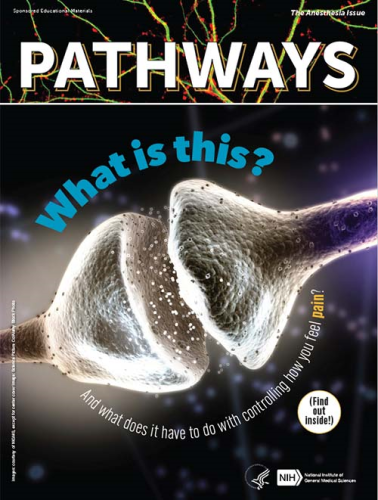Featured Topic: Anesthesia
What Is Anesthesia?
Anesthesia is a type of medicine used to prevent pain during surgery and other medical procedures. The four types of anesthesia all act differently, ranging from making patients unconscious and unable to move to numbing just small areas of the skin.

How Anesthesia Works
Anesthesia prevents pain by stopping nerves from passing signals to the brain. Inhibitory neurotransmitters, for example, are released in response to some anesthetics and reduce the responsiveness of surrounding nerves.
Types of Anesthesia
- General: causes unconsciousness and loss of feeling in complex procedures such as back surgery
- Monitored sedation: relaxes the body in procedures such as colonoscopies
- Regional: numbs sensation only in the area that needs it, as for hand surgeries
- Local: affects only a small part of the body, such as a tooth during a root canal
Articles
NIGMS Educational Resources
Other Resources
- Anesthesia (MedlinePlus, NIH). Information on anesthesia, its uses, and its risks.
- Going Under: A Closer Look at Anesthesia (NIH News in Heath). An article about the use of anesthesia during surgery and other procedures.
- Anesthesiology Postdoctoral Training Program. Information regarding the NIGMS-funded anesthesiology postdoctoral training program.
- Get Excited About the Brain! A coloring and activity book for kids ages 8 through 12 to learn about parts of the brain, the process of memory, and brain cells.
- Brain Explorer. An interactive educational experience based on discoveries from real experiments to learn about the scientific method and the brain.
This page last updated on
05/29/2025 12:58 PM

